
Let me tell you a little tale…the kind born of jet lag, espresso, and a stubborn suitcase wheel that gave up on life at precisely the wrong cobblestoned moment.
I had just disembarked from a glorious Mediterranean cruise, heart full from Santorini sunsets, stomach still reeling from an ill-advised fourth gelato in Naples. When we docked at Civitavecchia—the port that serves Rome—I was brimming with that unique excitement only cruise passengers know: land legs and a mission to conquer the Eternal City in one day flat.
But ah, the simple question: “How should I get from the port to Rome?” Easy, right? Spoiler: It’s a jungle out there, my friends.
After navigating this trek more times than I can count (and only getting lost twice—maybe three times), I’ve tested just about every possible way to journey from Civitavecchia to Rome and lived to tell the tale.
So, dear cruisers, whether you’re on a tight budget or looking to be whisked away in air-conditioned splendor, here are the 9 transport options from Civitavecchia to Rome, ranked by value—with all the nitty-gritty, not-sold-in-the-brochure secrets you actually need.
1. Regional Train – The Frugal Adventurer’s Favorite
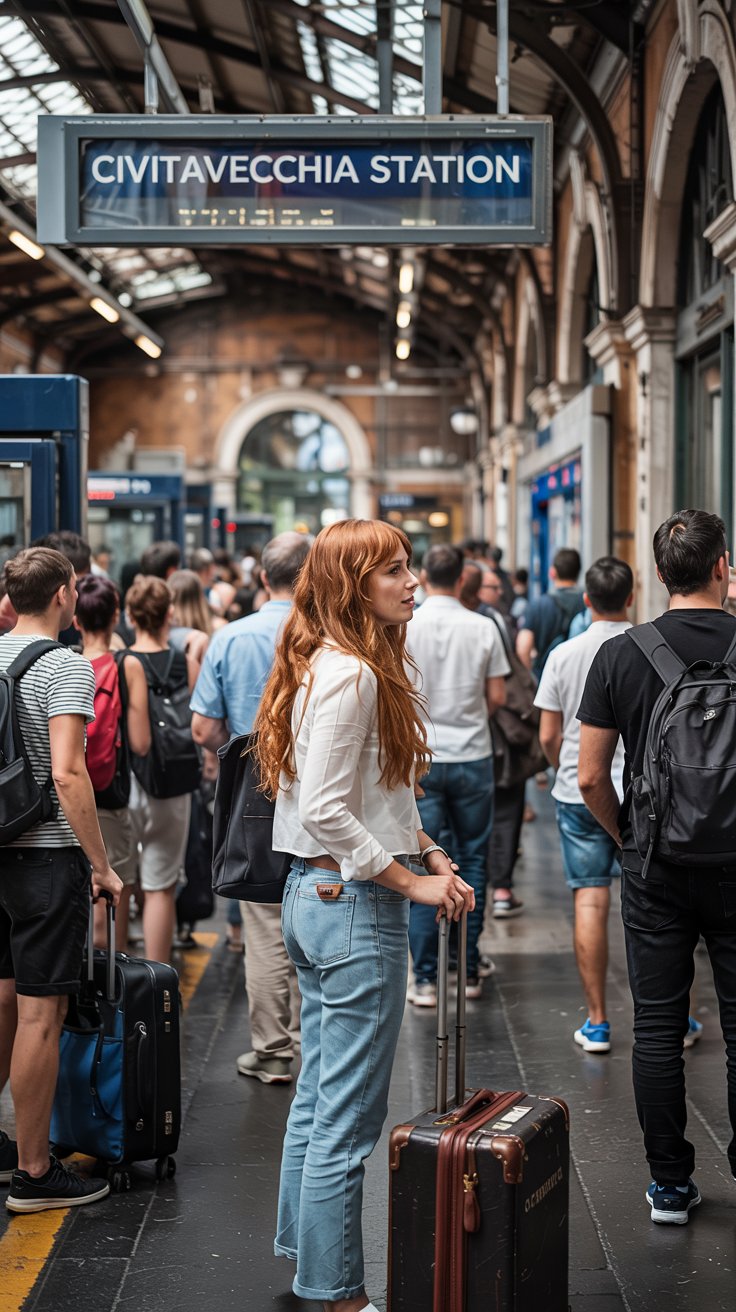
Value Score: 💰💰💰💰💰
The regional train from Civitavecchia to Rome is like finding a vintage Gucci bag at a flea market—authentic, affordable, and surprisingly chic if you know what you’re doing.
Trains run roughly every 30 minutes and take about 70–80 minutes to reach Roma Termini (the city’s central station). The cost? Around €5–€5.60 per person. That’s less than your Aperol Spritz the night before—score!
Insider Tip: Buy your ticket IN ADVANCE using the Trenitalia app or at the station’s ticket machines (which also offer multilingual instructions). And for heaven’s sake, don’t forget to validate your ticket in the little green or yellow stamping machines before boarding—unless you enjoy flirting with Italian train fines.
What You’ll Love:
- Super economical
- Great local experience
- No need to book far ahead
What to Watch Out For:
- From the dock to the train station, it’s a 15–20-minute walk or short shuttle ride (often free with your cruise line)
- Trains can be crowded and, shall we say, “functionally vintage”
2. Cruise Line Shuttle + Train – Safety with a Side of Independence
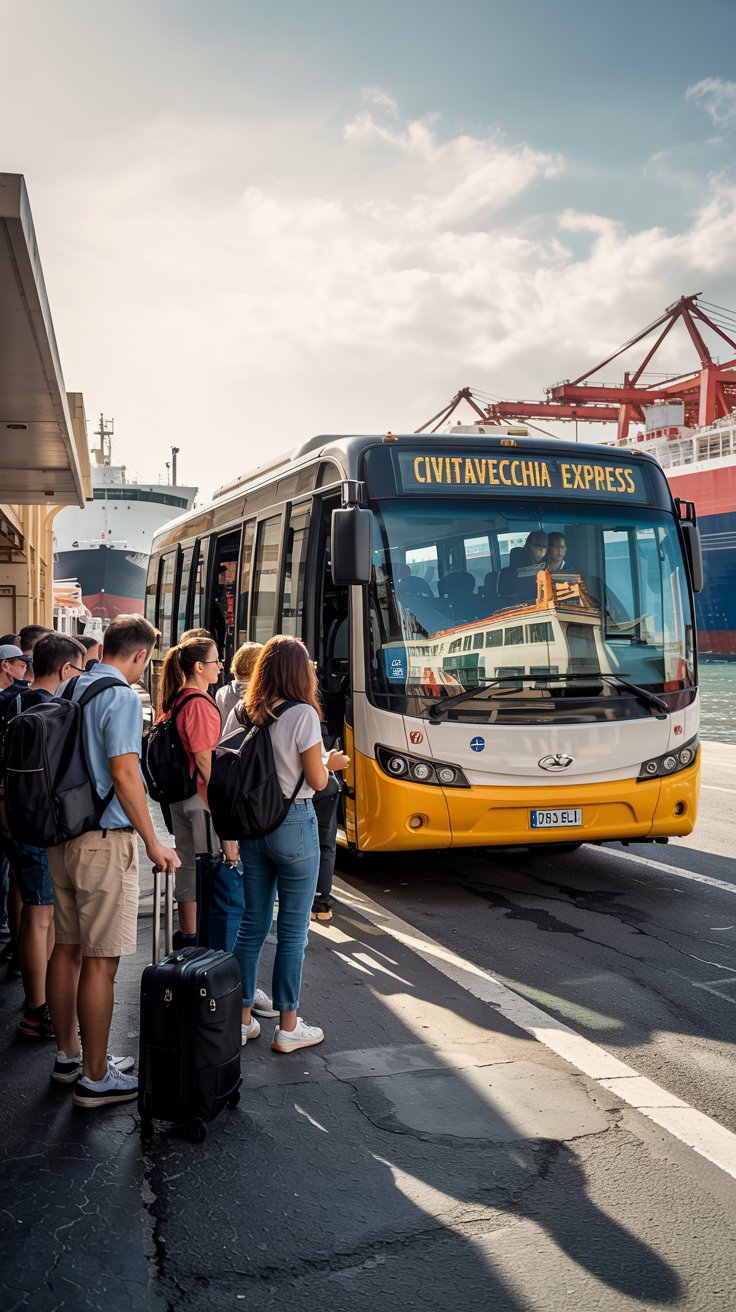
Value Score: 💰💰💰💰½
This is like traveling with training wheels—but the classy kind.
Many cruise lines offer a paid shuttle bus that takes you from the ship right to the Civitavecchia train station. From there, you’re free to jump on the regional train to Rome.
Why It’s Great: You still get the wallet-friendly train price but with less chance of winding up on the wrong side of the port after following a Google Maps shortcut that turns out to be a loading dock (ask me how I know).
What You’ll Love:
- Combines ease with economy
- Less walking
- Still very budget-friendly
Potential Snag:
- Slightly more expensive than DIY entirely
- Shuttle timing might not align perfectly with trains
Bonus Tip: Always build in buffer time to get back—Italian trains run on charm, not punctuality.
3. Private Transfer – The Stress-Free Splurge

Value Score: 💰💰💰💰
Let’s face it: sometimes you don’t want to think; you just want to be handed a bottle of chilled water and chauffeured through the countryside like Roman royalty.
Private transfers can cost anywhere from €120–€160 depending on the vehicle and number of passengers, but if you’re traveling with a group (hello, cruise friend squad!) it can split down to a surprisingly reasonable rate.
Insider Tip: Book your transfer before your trip through reputable providers. Avoid charming but sketchy drivers lurking by the port with “special offers.”
What You’ll Love:
- Comfort, style, and door-to-door service
- No train timetables to juggle
- Great if you have luggage or mobility issues
What to Watch Out For:
- Pricey for solo travelers
- Limited spontaneity
4. Shared Shuttle Minivans – Group Hug, Italian Style
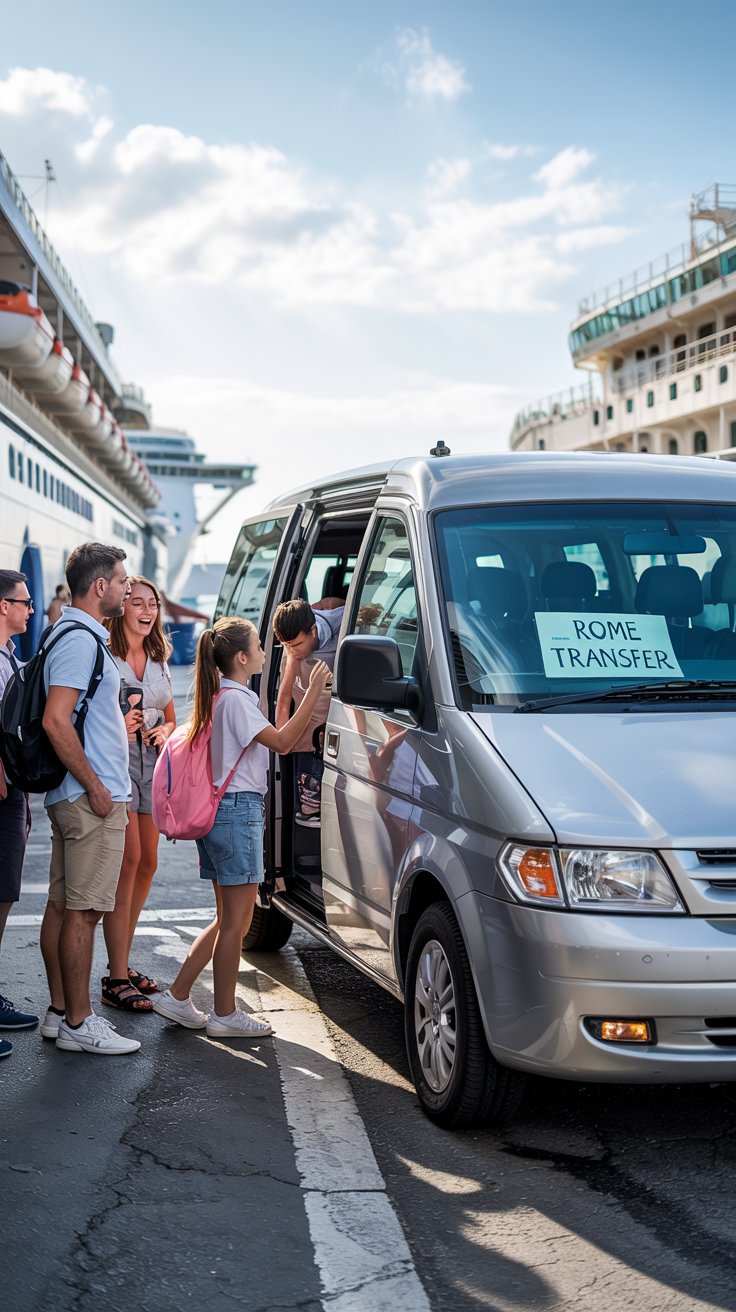
Value Score: 💰💰💰½
These gems are a sort of middle ground—like a comfy pair of loafers. For €35–€50 per person, you hop in a shared minivan or bus with fellow cruisers, often booked through a third-party provider.
They’ll meet you at the dock and drop you somewhere central in Rome.
What You’ll Love:
- Less expensive than a private car
- Convenient door-to-door service
- Great way to make cruise friends for life (or at least for lunch)
What Might Bug You:
- Wait-time as the shuttle fills up
- Not as fast if your group has multiple drop-offs
Cruise Tip: Beware the post-tour return rush. These shuttles can get booked solid. Always book early.
5. Taxi – Simple, But Not So Sweet
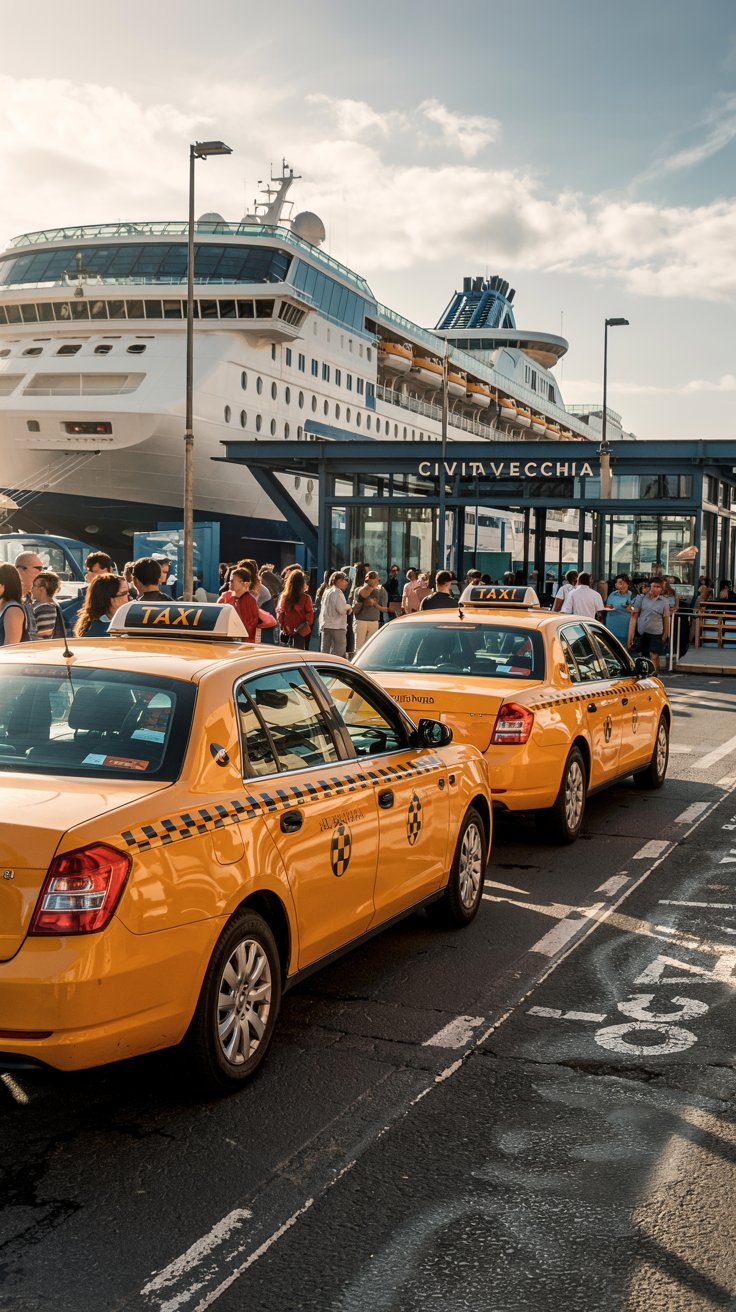
Value Score: 💰💰½
Look, I love Italy. And I love Italians. But Civitavecchia taxis can be…let’s say, “enthusiastic capitalists.”
You’ll pay upwards of €140–€160 for a taxi ride into central Rome. If you do go this route, negotiate fare upfront or insist on using the meter (and prepare to receive a look that says “ah, you’ve done this before…”).
What You’ll Love:
- Direct
- No muss, no fuss
What’ll Make You Grit Your Teeth:
- Pricey!
- Quality wildly varies
- Some drivers aren’t keen on credit cards
6. Cruise Excursions – Maximum Organization, Minimum Flexibility
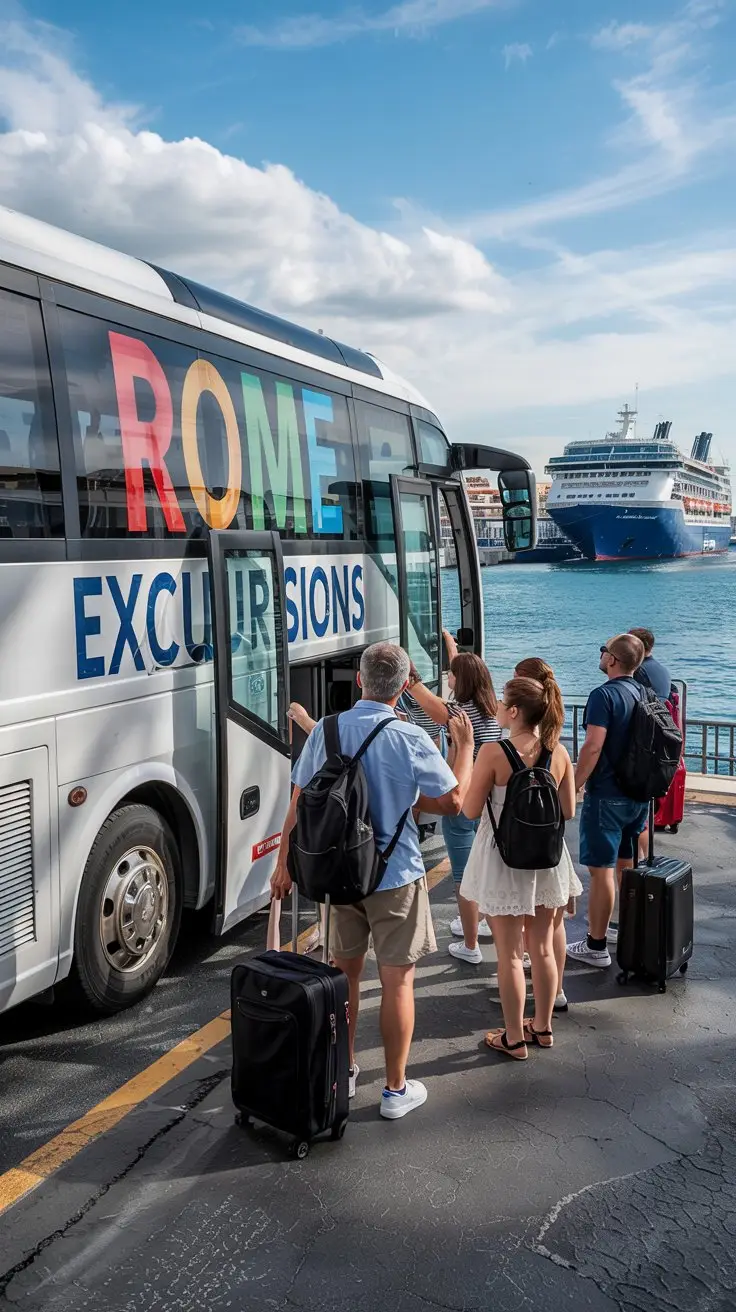
Value Score: 💰💰💰
Every cruise line offers organized Rome excursions that include transportation from port to city.
Pros: You’ll be shepherded in a climate-controlled coach, and the ship won’t leave without you if things run late. You’ll see key sights, hear fun facts (true or questionably true), and know exactly what to expect.
Cons: You’ll also pay a premium (think €80–€150+) for the convenience and might find yourself waiting (a lot) for that one couple who misread the meeting time. There’s always one.
Bonus Tip: If you do take an excursion, double-check whether it includes interior access to the Colosseum or Vatican. Many only offer “photo stops” unless you read the fine print.
7. Rental Car – For the Brave-Hearted

Value Score: 💰💰
Let me be blunt: unless you have the nerves of a Formula One driver and an intimate relationship with GPS, skip this.
Driving in Rome is like being inside a video game where nobody plays by the rules, and everyone’s character car is a Fiat Panda with attitude.
However, if you have a longer Italian road trip planned, it can be a decent way to start your journey—just don’t plan to park near anything built before the Renaissance.
What You’ll Love:
- Total freedom
- Gorgeous drive from coast to capital
What’ll Drive You Crazy:
- Italian traffic (and parking)
- Rome’s ZTL (Limited Traffic Zone)—vehicles not registered will get automatically fined
Cruise Tip: Never assume you’ll return to the ship without hiccups. Always allow an iron-clad cushion of several hours.
8. Local Bus – Budget, But Not Built for Cruisers
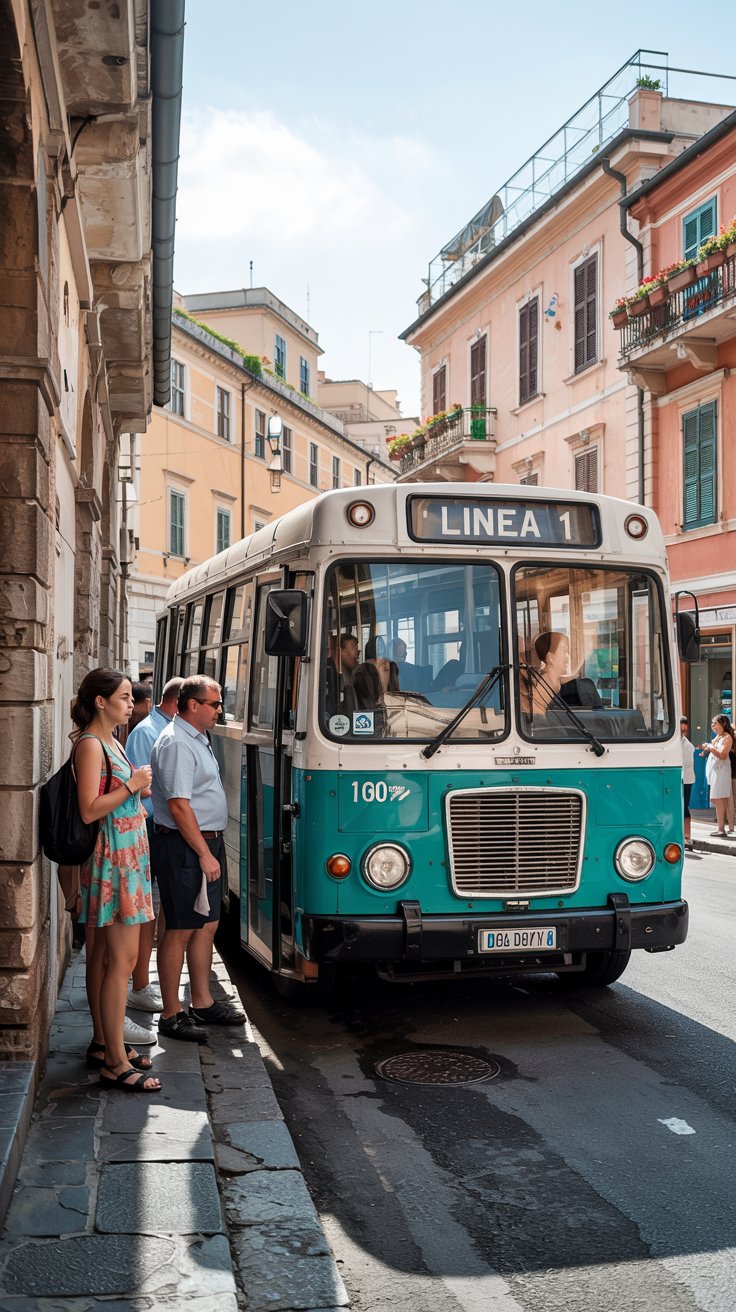
Value Score: 💰½
There is a local bus service, but unless you’re fluent in Italian transit systems and travel puzzles, it’s borderline masochistic for cruise guests on limited time.
Buses can be infrequent, routes confusing, and stops hard to navigate—plus you’re likely to end up further from Rome’s main attractions.
Worth it only if: you’re extremely budget conscious and have nowhere urgent to be. (So… probably not you.)
9. Hitchhiking – Just Don’t
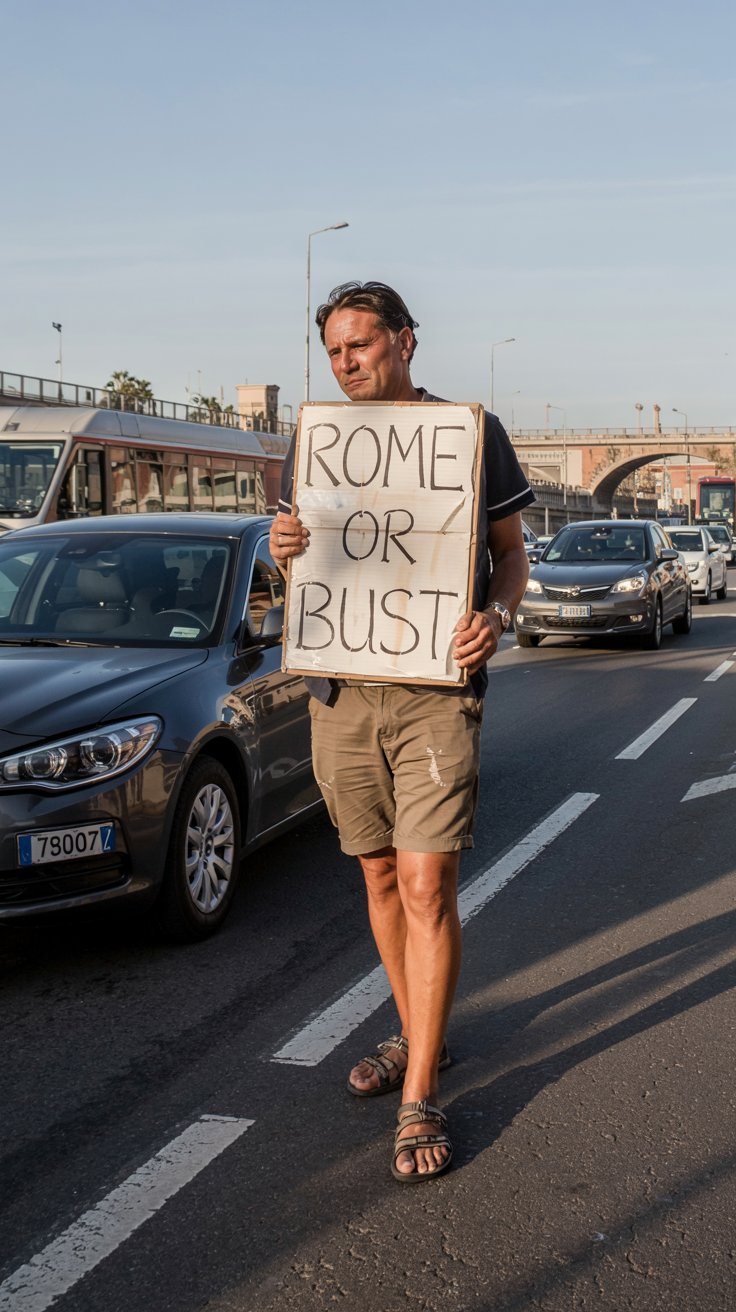
Value Score: ❌
Yes, I’ve actually seen one poor soul by the port with a sign that read “Rome or bust.”
Bust, indeed.
While romantic in theory, hitchhiking is not just unreliable but not recommended for safety or legal reasons—especially if you need to get back to the ship by 6 pm sharp.
Final Thoughts: Pick Your Ride, Live Your Roman Holiday
Rome is a city that rewarded emperors, inspired poets, and makes even your average gelato cone feel like a spiritual experience. Whether you arrive in a regional train with crumbs from a cornetto still on your lap, or in a private car like a visiting diplomat, the magic awaits just the same.
Travel smart, know your style, and always—always!—build in time for a cappuccino and at least 47 photos of the Colosseum.
Bonus Tips You Didn’t Know You Needed:
- When returning, board your train from Roma Ostiense or Roma S. Pietro for easier crowd control than Termini
- A port bus called “Port Mobility” often shuttles passengers for free or €2 to the port gate
- Don’t rely on Uber—it exists in Rome but is limited (and expensive)
- Always carry small change for unexpected ticket vending machines or tips
- If time is tight, skip the Vatican lines and enjoy Castel Sant’Angelo or stroll Trastevere—the real Rome lives there
So, what’ll it be—backpack latte-sipping adventurer or van-with-leather-seats ride-sharing cruiser? Whatever your pick, may your Rome day be unforgettable, and your return to port wonderfully uneventful.
Ciao, amici!
